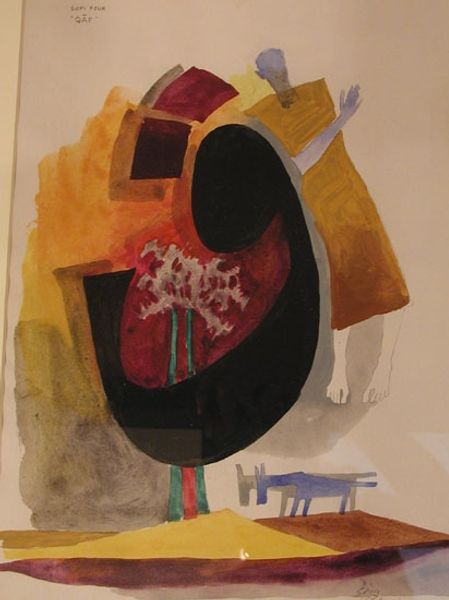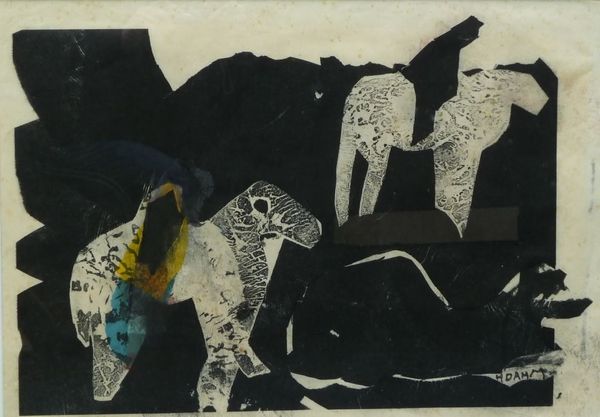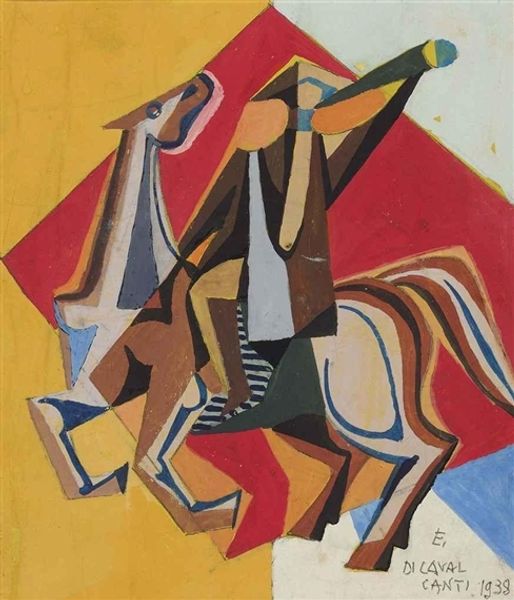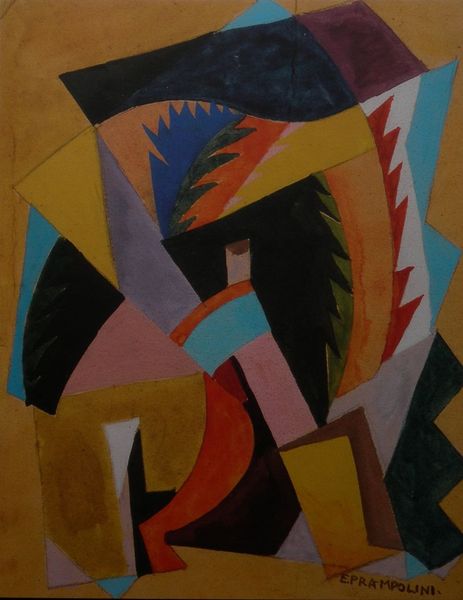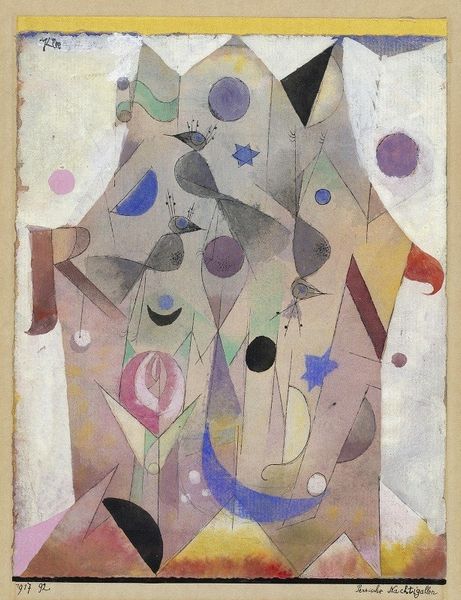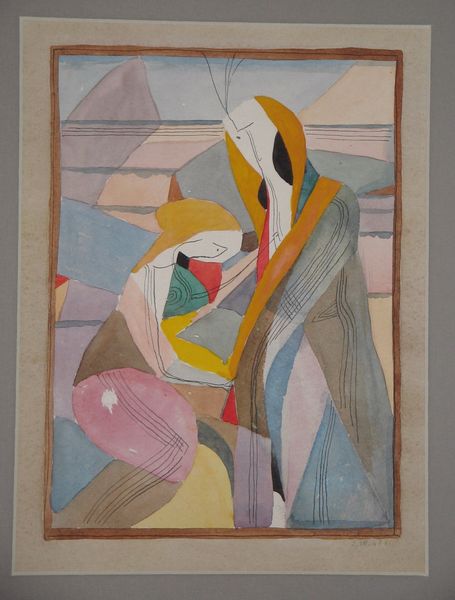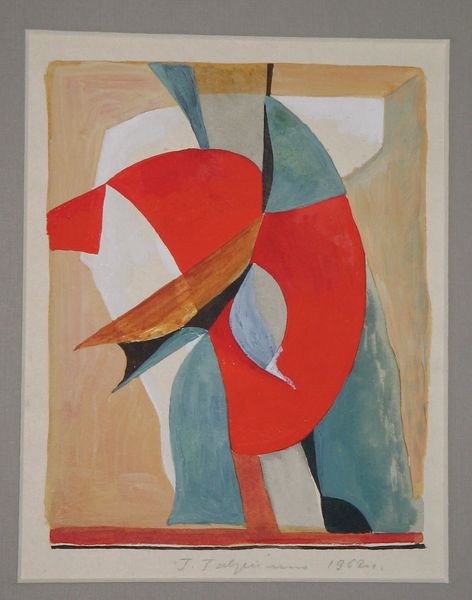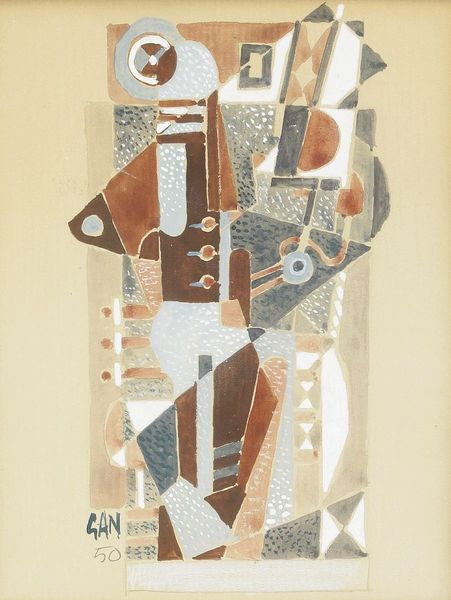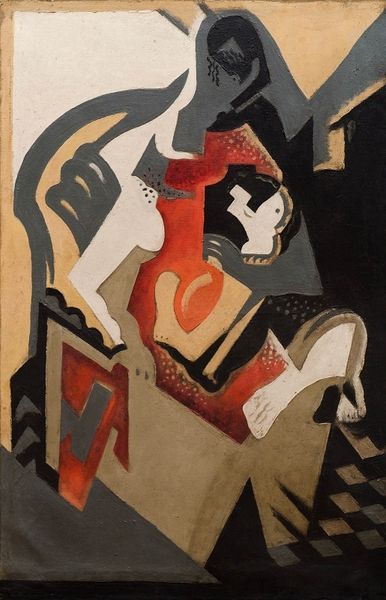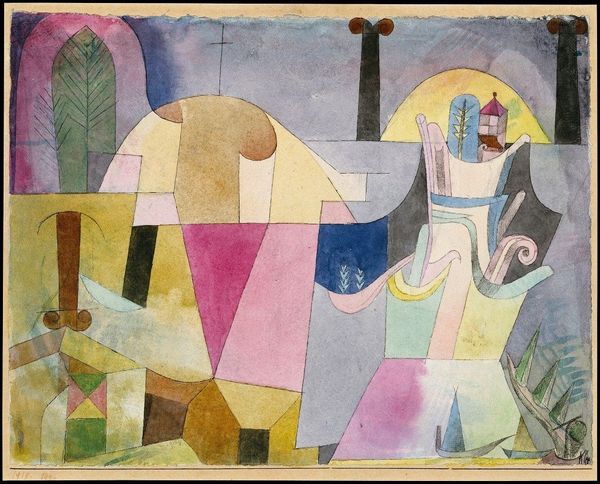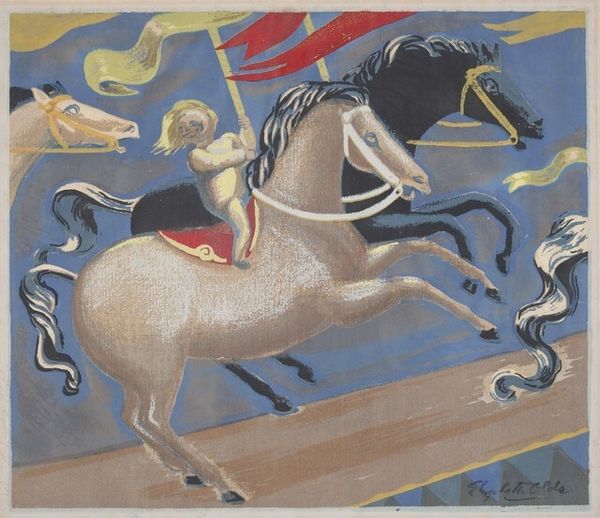
painting, watercolor
#
water colours
#
painting
#
figuration
#
watercolor
#
coloured pencil
#
abstraction
#
modernism
Dimensions: 35.5 x 28 cm
Copyright: M.F. Husain,Fair Use
Editor: Here we have M.F. Husain's "Hai-Seen-Hai-Noon," a 1978 watercolor and coloured pencil piece. It feels like a dreamscape, with abstracted figures and soft washes of colour. I’m particularly struck by the way the horses are rendered – almost like cutouts. What do you make of it? Curator: It's fascinating to consider this piece through the lens of materiality. Notice the very visible hand of the artist – the strokes of watercolour and pencil aren't hidden but rather celebrated. How does the visible process of creation change our understanding of the work? Editor: That's interesting. It makes it feel less precious, maybe more about the act of creation itself rather than a finished product. Curator: Exactly. Think about the accessibility of watercolor and coloured pencil, relatively inexpensive and readily available materials. Husain, working within a post-colonial Indian context, might be deliberately using these everyday materials to democratize art-making. Is he making a statement about the accessibility of art, both in its production and consumption? Editor: I see what you mean. It's not grand oil painting; it’s something much more immediate and relatable. Do you think the abstraction plays into this at all? Curator: Absolutely. Abstraction removes the need for highly specialized artistic training. The focus shifts from representational skill to the manipulation of material and form. Consider the labour involved in creating this piece; it’s evident and approachable, less about virtuosity and more about process. Editor: I hadn’t thought about the connection between the materials and the message like that before. It reframes how I see not just this piece, but also art made with similar media. Curator: It opens up interesting avenues for interpretation, doesn’t it? We move beyond simply looking at the image to considering the social and economic implications of its creation.
Comments
No comments
Be the first to comment and join the conversation on the ultimate creative platform.
